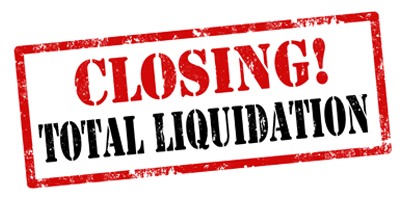The Basic Principles Of Company Liquidation
The Basic Principles Of Company Liquidation
Blog Article
The Company Liquidation Statements
Table of ContentsSome Known Factual Statements About Company Liquidation Top Guidelines Of Company LiquidationFacts About Company Liquidation UncoveredGetting The Company Liquidation To WorkUnknown Facts About Company Liquidation
A liquidator is especially appointed to look after the winding up of a business's affairs in order for it to be shut down generally when the firm is going bankrupt. The liquidator is an impartial 3rd party who manages the sale of firm possessions in order to repay any arrearages.Their function consists of, however is not restricted to: Objective Overseer: A liquidator is tasked with serving as an unbiased third party to manage the whole business liquidation process. Create Declaration of Affairs: Liquidators should produce a detailed statement of affairs record. This paper is distributed to creditors, detailing the current economic condition of business at the time of its liquidation.
After the liquidation of a company, its presence is gotten rid of from Business House and it discontinues to be a lawful entity. If directors browsed the procedure without problem, there would be no penalties or personal liability for firm debts expected. Currently, with a clean slate, supervisors can check out new service possibilities, though specialist appointment is advisable.
The 3-Minute Rule for Company Liquidation
If more than 90% of all firm investors concur, liquidation can take place on short notice within seven days, the minimal statutory notice for financial institutions. However, normally, the bigger the liquidation and the even more properties and capital the business has, the longer the procedure will take. 'Do I have to pay to liquidate my business?', the solution will certainly depend on whether your organization has any type of properties leftover when liquidating.

We recognize that no two companies coincide, which is why we will certainly take the time to learn more about your business so we can recommend the most effective strategy for click reference you. We only operate in your benefits, so you can be completely positive in the solution we provide.
The Facts About Company Liquidation Revealed
In the UK, there is a set process to closing down or reorganizing a restricted company, whether it is solvent or insolvent. This procedure is called liquidation and can only be taken care of by an accredited insolvency expert (IP) according to the Insolvency Act 1986. There are 4 primary read here kinds of business liquidation process: Creditors' Volunteer Liquidation (CVL); Mandatory liquidation; Administration; and Participants' Voluntary Liquidation (MVL).

In these scenarios, it is necessary that the business stops trading; if the organization remains to trade, the directors can be held personally liable and it might result in the insolvency professional reporting wrongful trading, recognized as misfeasance, which may lead to lawsuit. The supervisors designate a bankruptcy professional and once this has actually been agreed and confirmed, there is a meeting with the shareholders.
Obviously, if there are no shareholders, this step of the procedure is not necessary (Company Liquidation). The IP takes control of the company and starts the firm liquidation procedure. The supervisors are no more involved in what happens, consisting of the sale of the business's possessions. If the directors desire any of the properties, they can notify the IP.
8 Easy Facts About Company Liquidation Described
The primary distinction is that the company's financial institutions put on the court for an ending up order which compels the financially troubled company into a liquidation procedure. For the most part, lenders take this action as a last hope due to the fact that they have not received repayment with other kinds of settlement. The court assigns an insolvency specialist, additionally called a main receiver, to conduct the compulsory company liquidation process.
This sort of firm liquidation is not volunteer and supervisors' conduct is reported to the UK's Secretary of State once the liquidation procedure has been completed. Consequently, any kind of supervisor that fails to accept the IP or has been associated with director misconduct, or a fraudulent act, may result in severe effects (Company Liquidation).
It is used as a method to shield the business from any kind of lawful action by its creditors. The directors of the company agree to make routine repayments to resolve their debts over a period of time.
Indicators on Company Liquidation You Should Know
This supplies the business with time to develop a plan moving forward to rescue the firm and avoid liquidation. At this factor, supervisors hand control of the business over to the assigned manager. If a firm is solvent however the supervisors and investors intend to close the business, a browse around here Participants Voluntary Liquidation is the right choice.
The company liquidation process is managed by a liquidator designated by the supervisors and investors of the company and they need to authorize a statement that there are no lenders remaining. The liquidation procedure for an MVL resembles that of a CVL because possessions are know however the proceeds are dispersed to the directors and the investors of the business after the liquidator's charges have been paid.
Report this page